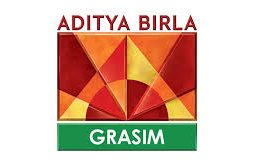
Rs 35,000-cr collected in FY23: Windfall tax revenue seen falling in FY24 amid softer crude prices – EQ Mag
Tax rate zero since May 15; no plan to withdraw the policy
The Centre collected close to Rs 35,000 crore from windfall taxes on petroleum products in FY23 and will continue with the special provision, as a safeguard against abnormal price movement in FY24.
However, not much revenue is expected from this impost given the sharp fall in global crude prices. The taxes move either way depending on crude prices and the crack spread (refining margin).
Currently, windfall taxes on domestically produced crude and export of petrol, diesel and jet fuel are nil as crude prices and refining margins have moderated to a level where no abnormal profits are observed.
However, the levy won’t be withdrawn as the Centre has decided to retain what it considers is an efficient tool against abnormal profits when prices rise. Windfall tax rate on crude was cut to zero on May 15 after Indian basket crude prices fell to below $75/barrel, which is seemingly the threshold kept by the government to remove the special taxes.
On July 1, 2022, the Centre imposed special additional excise duty (SAED) of Rs 23,250/tonne on crude and export taxes on petrol, diesel and ATF at Rs 6/litre, Rs 13/litre and Rs 6/litre, respectively.
It scrapped the duty on petrol in July itself. The tax on crude was made zero on May 15 this year, while it was already zero on ATF in March and on diesel in April 2023.
“There is no SAED on the fuels for the past two fortnights as prices have fallen and there are no abnormal profits. However, the levy provision will continue as a safeguard against sudden price surges,” a senior official told FE.
The government’s rationale for introducing these taxes was to lay its hands on a chunk of the “windfall profits” reaped by some of the domestic firms, on the back of elevated global oil prices. The move was also aimed at addressing the crunch in the domestic fuel market, as private refiners neglected supplies to domestic retail outlets while tapping the highly remunerative export markets.
The Indian basket of crude has moderated to $74.98/barrel on average in May and $74.45 so far in June. The crude price had shot up to $116.01/barrel in June 2022 before tax kicked in from July. Benchmark Singapore’s gross refining margin (GRM) was trading around $4/bbl since April 2023 as against $24/bbl by June 2022 from as low as $6.0/bbl in January 2022.
ICICI Direct said in a note said the current futures price trends indicate an average price of $72-76/bbl over the next 12-18 months.
State-run oil marketing companies (OMCs) are likely to cut fuel prices soon as the government expects the refiners to pass on the benefit of lower crude oil prices to the customers.
The refiners had reported losses in the first two-quarters of last fiscal, a lower profit year-on-year in the third quarter, and finally a sizeable growth in net profit in the fourth quarter ending March 2023.
In June 2022, the IOCL is estimated to have sold each litre at a loss of Rs 16 for petrol and Rs 23 for diesel. Last month in May, the refiner is estimated to have made a profit of Rs 13 and Rs 12, respectively.
Crack spread refers to the difference between the purchase price of crude oil and the selling price of finished products, such as diesel, that a refinery produces from crude oil.














